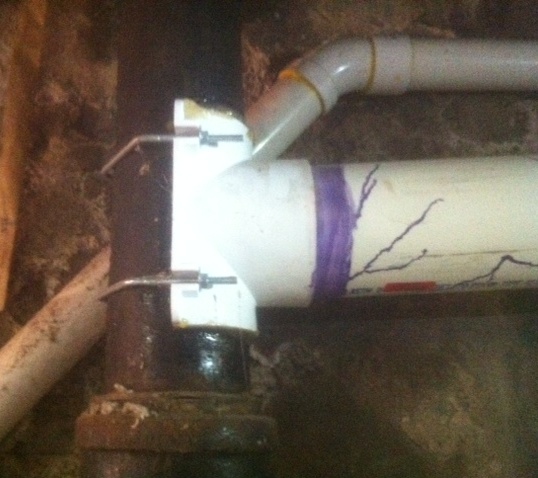Inspecting DWV Saddle Fittings


I have lost count on the number of saddle fittings I have seen over the years. Saddle fittings are sold at most home centers and plumbing supply stores. So are they acceptable or not? The answer is maybe. Most home inspectors “flag” these connections. The ICC (International Code Council) Plumbing Code – P3003.2 prohibits the use of saddle type fittings on any part of the Drain Waste Vent system. Some municipalities allow the use of saddle fittings for very specific applications, not normally encountered in a residential DWV system. So when can saddle type fittings be used, and what does the code specifically say about them MORE…
Most municipalities allow saddle type connections to be used underground when connecting to a main or municipal drain service pipe. Special considerations must be made when using saddle fittings including; mechanical tapping (if possible) is most desired, ensuring that the screws and bolts are tightened properly to ensure there are no point loading failures.
The ICC text is very clear: P3003.2 Prohibited Joints.
Running threads and bands shall not be used in the drainage system. Drainage and vent piping shall not be drilled, tapped, burned, or welded. The following types of joints shall be prohibited.
- Cement or concrete
- Mastic or hot-pour bituminous joints
- Joints made with fittings not approved for the specific installation
- Joints between different diameter pipes made with elastomeric rolling O-rings
- Solvent-cemented joints between different types of plastic pipe
- Saddle – type fittings
A home inspector should note all of these connections as a defect and advise their client to have a licensed plumber evaluate and properly repair.
Related Articles
- Sanitary Sewer Cleanouts: What Are The Requirements?
- Inspecting Cross Linked Polyethylene (PEX) Pipe
- Air Admittance Valves (AAV) and Air Check Valves
- PEX Problems
Want To Learn More? Click HERE to Search Our Full Database Of Home Inspector Newsletters.
